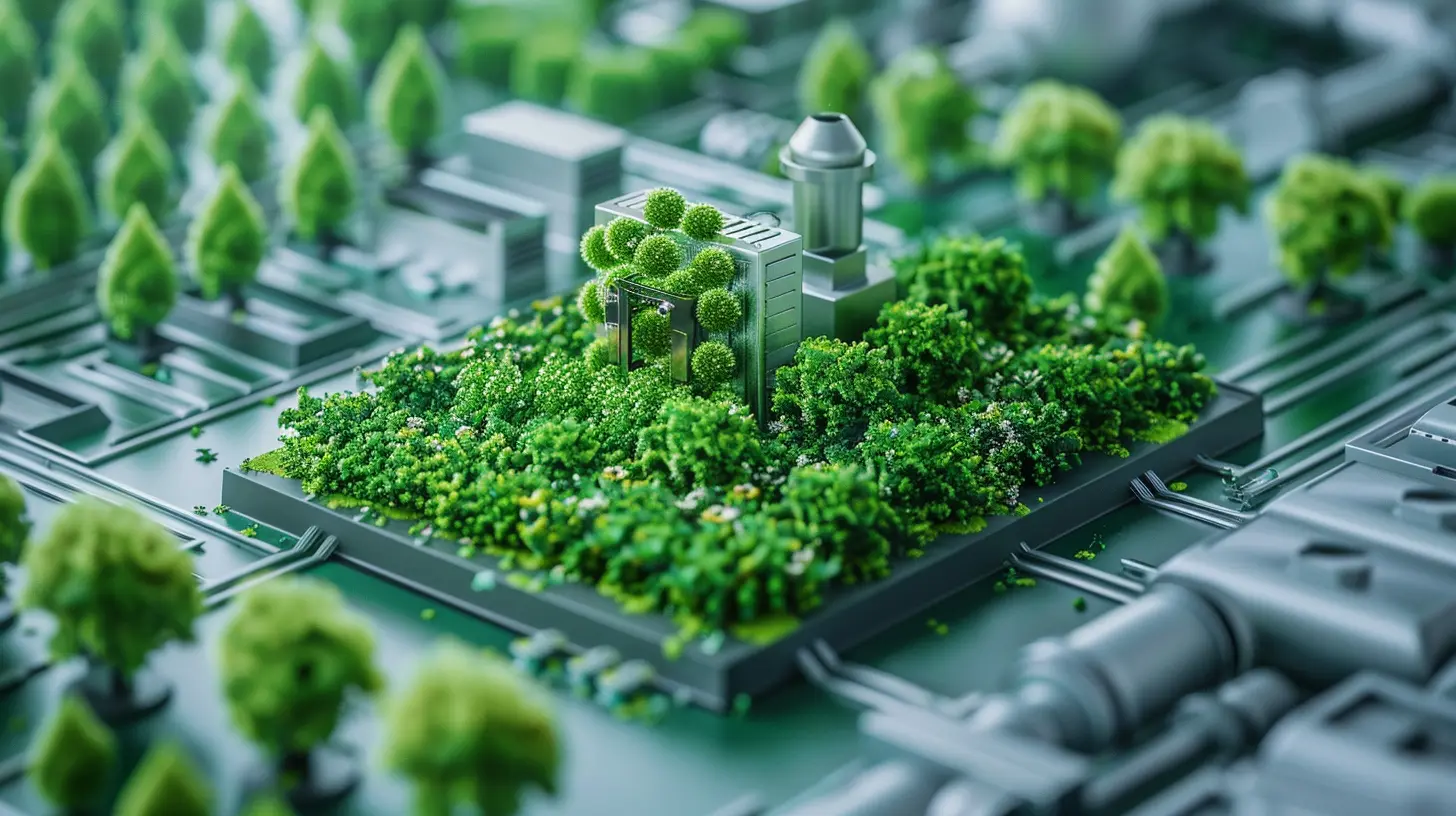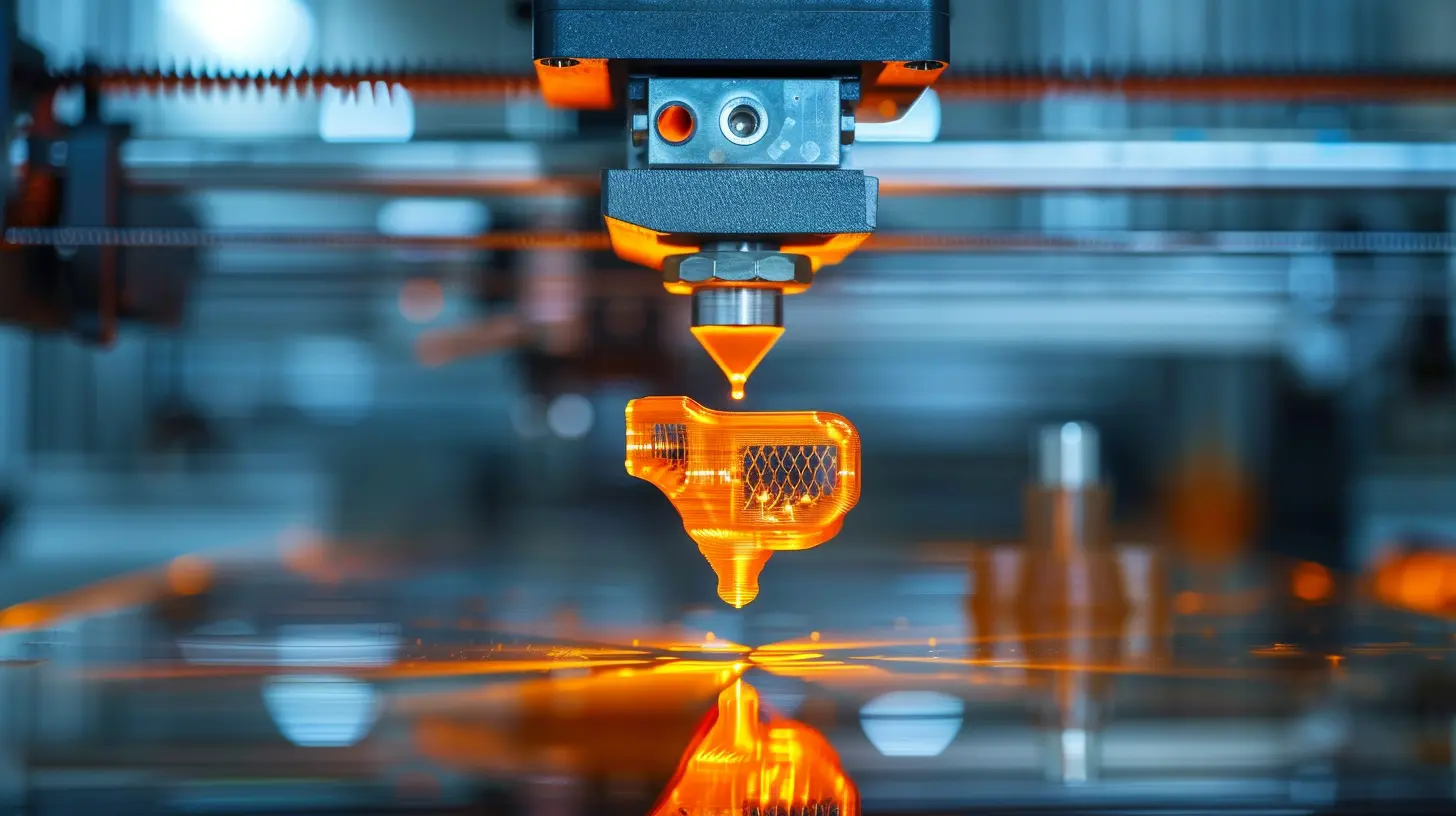Sustainable 3D Printing: How Tech Is Reducing Industrial Waste
22 October 2025
3D printing is transforming the way we manufacture products, making production faster, more efficient, and—most importantly—more sustainable. With industries under increasing pressure to reduce waste and carbon footprints, advanced 3D printing technologies are stepping up as a game-changer.
But how exactly does 3D printing help in reducing industrial waste? And can it really make manufacturing eco-friendly? Let's dive into the details.

The Problem: Industrial Waste and Environmental Impact
Traditional manufacturing processes are highly wasteful. Whether it's metal fabrication, injection molding, or CNC machining, there’s usually a significant amount of leftover material that gets discarded. According to studies, industrial waste contributes to nearly 50% of global waste production.From piles of unused plastic to excessive energy consumption, conventional methods keep adding to environmental issues. This is where 3D printing—also known as additive manufacturing—comes in to save the day.

How 3D Printing Reduces Industrial Waste
Unlike subtractive manufacturing, where material is cut away from a larger piece, 3D printing builds products layer by layer using only the necessary amount of material. This drastically reduces waste.Let's break down the different ways 3D printing is promoting sustainability in manufacturing.
1. Minimizing Material Waste
Unlike traditional methods that generate scraps, 3D printing uses only what is needed. Whether it's plastic, metal, or biopolymers, the material is utilized efficiently. This not only saves resources but also cuts down on disposal costs.2. Reusing and Recycling Materials
Many modern 3D printers are compatible with recycled plastics and bio-based filaments. Some companies even grind down plastic waste and remold it into new filament for fresh printing projects. This creates a circular production cycle where materials are reused instead of discarded.3. On-Demand Manufacturing Reduces Overstocking
Traditional manufacturing often requires bulk production and warehousing, leading to excess inventory and waste from unsold products. With 3D printing, production can be done on-demand, reducing overproduction and surplus waste.4. Less Energy Consumption
Most traditional manufacturing techniques, like molding and casting, consume a lot of energy. 3D printing is typically more efficient because it eliminates multiple steps in the production process, which lowers overall energy usage.5. Localized Production (Lowering Carbon Footprint)
Imagine ordering a product that needs to be shipped halfway across the world. The fuel emissions alone are staggering. With 3D printing, goods can be manufactured locally, reducing transportation-related carbon emissions.6. Biodegradable and Sustainable Materials
Many 3D printing companies are shifting to eco-friendly materials, such as biopolymers, algae-based filaments, and even recycled coffee grounds. These materials naturally break down over time, making them much more sustainable than petroleum-based plastics.
Industries Leading the Way in Sustainable 3D Printing
3D printing is making a major impact across multiple industries, from fashion and construction to medical and automotive sectors. Let’s take a look at how some industries are leveraging this technology to minimize waste.1. Automotive Industry
Car manufacturers like BMW and Ford are using 3D printing to create lightweight, high-performance components. This not only reduces the amount of metal and plastic used but also improves fuel efficiency by making cars lighter.2. Medical and Healthcare
The healthcare industry is using biodegradable 3D-printed implants, prosthetics, and even human tissues. These innovations help cut down on medical waste while providing customized solutions for patients.3. Construction Industry
3D printing is revolutionizing construction by reducing material waste and speeding up building time. Companies like ICON are using 3D-printed concrete structures to create affordable, energy-efficient housing with minimal waste.4. Fashion and Footwear
Brands like Adidas and Nike are using 3D printing to produce shoes with recycled materials, reducing the huge amount of waste typically generated in footwear production.5. Aerospace Industry
NASA and SpaceX are embracing 3D printing for spacecraft components. This not only cuts down on material waste but also allows astronauts to produce essential parts directly in space, reducing the need for costly resupply missions.
Challenges in Sustainable 3D Printing
While 3D printing is incredibly promising, it’s not without its challenges. Some of the biggest roadblocks include:- Material Limitations – Not all materials are currently recyclable or biodegradable.
- High Initial Costs – Industrial-scale 3D printing can be expensive to implement.
- Post-Processing Waste – Some 3D-printed parts require post-processing, which can still generate some waste.
Despite these hurdles, continuous research and innovation are pushing sustainable 3D printing forward.
The Future of Sustainable 3D Printing
As technology evolves, 3D printing is expected to become even more sustainable. Innovations like self-healing materials, 4D printing, and AI-powered design optimizations will further enhance efficiency and waste reduction.Imagine a world where products are not just printed on demand but also designed to self-repair, reducing the need for replacements. That’s the future we’re heading toward, thanks to sustainable 3D printing.
Conclusion
Sustainable 3D printing is already proving to be a game-changer in reducing industrial waste. Whether it's creating products with less material, utilizing recycled resources, or cutting down on transportation emissions, the benefits are clear.With advancements happening at a rapid pace, 3D printing has the potential to reshape manufacturing into a truly eco-friendly industry. The only question is—how soon will traditional manufacturers fully embrace it?
all images in this post were generated using AI tools
Category:
Environmental TechAuthor:

Ugo Coleman
Discussion
rate this article
1 comments
Drake Hamilton
Great read! It’s inspiring to see how 3D printing technology is evolving to tackle industrial waste. Embracing sustainability in tech not only benefits the environment but also encourages innovation. Excited to see where this journey takes us next in creating a greener future!
October 23, 2025 at 3:41 AM


